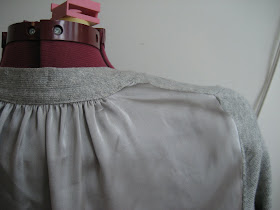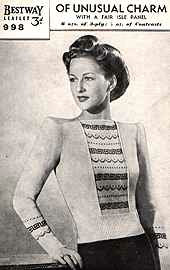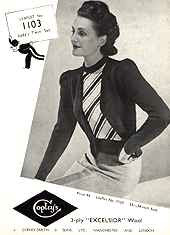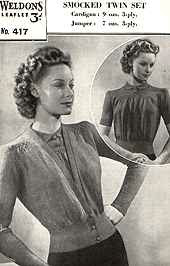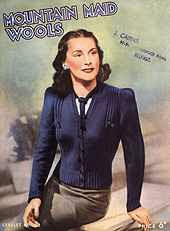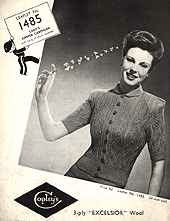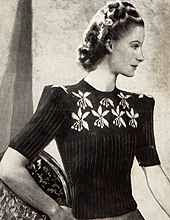Triangular,
and Rectangular.
Read about how to make your own shoulder padding from gauge squares here. It is worth noting that the effect of the Rectangular pad is similar to that achieved with Sleeve Head Rolls.
1.

A Square pad tacked to both the shoulder seam and the inside of the sleeve head, rounding the shoulder line and supporting the apex of the puff.

2.
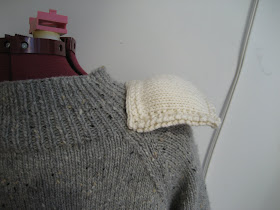
A Square pad placed halfway down the neck (at about the bra strap) so that half of the pad projects beyond the natural shoulder.The pad is sewn along one side, crossing the shoulder seam, with the inner corners tacked to the front and back of the garment. The free edge of the pad is weighed down by the sleeve, taking the shape of the puff. The seam of the pad, because it is located further down the neck avoids added height but still has a military feel.

3.

A Triangular Shoulder Pad with the fold (the longest side) attached to the shoulder near the centre top of the shoulder seam. The point of the triangle is left free floating to take the shape of the puff. With an overstuffed pad such as this one, a kick-up shoulder line can be achieved.

4.
(My favorite!) A Triangular Pad with the centre point attached to the shoulder. The folded side projects into the head of the sleeve, and dictates the end of the shoulder line. 
The sleeve follows the shape of the top of the pad and then falls in a clean vertical drop. This is a good way to give structure to a drapey or lacy knit.
5. A Rectangular Pad attached to the shoulder at the centre of the pad's long seam. Small stitches tack those inner corners to the front and the back of the garment.
A Rectangular Pad attached to the shoulder at the centre of the pad's long seam. Small stitches tack those inner corners to the front and the back of the garment.
 A Rectangular Pad attached to the shoulder at the centre of the pad's long seam. Small stitches tack those inner corners to the front and the back of the garment.
A Rectangular Pad attached to the shoulder at the centre of the pad's long seam. Small stitches tack those inner corners to the front and the back of the garment. The folded edge of the pad extends the shoulder line and supports the fullest part of the puff sleeve.The outer edge of the shoulder becomes rounded.
6.
 A Rectangular pad attached to the shoulder at the sleeve seam with the long seamed edge pointing up into the puff. The fullness of the sleeve is kept aloft by the pad's seam. This is suited to a twin set because of the seaming difficulties. The determined could tack the lower corners to a bra strap or a under shirt to prop up a knitted jacket.
A Rectangular pad attached to the shoulder at the sleeve seam with the long seamed edge pointing up into the puff. The fullness of the sleeve is kept aloft by the pad's seam. This is suited to a twin set because of the seaming difficulties. The determined could tack the lower corners to a bra strap or a under shirt to prop up a knitted jacket. The outer edge of the shoulder line is supported for a softer war time look.
The outer edge of the shoulder line is supported for a softer war time look. 
A Final Note:
 Use a seamless join like mattress stitch or grafting at the top shoulder seam in preparation for this type of padding.
Use a seamless join like mattress stitch or grafting at the top shoulder seam in preparation for this type of padding.Use a 3 needle bind off if you plan on using modern, store bought shoulder pads; the ridge created by the seam will provide a spine useful for stitching the centre of pads to the sweater.
You are reading "The Quest For Puff" ©Morgan Forrester
Up next:
Padding Vintage Sweaters with Sleeve Heads
Coming Soon:
Vintage Sleeves: Puff Pleating
Vintage Sleeves: Seaming for Puff
Creating Puffed Sleeves Anew




